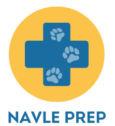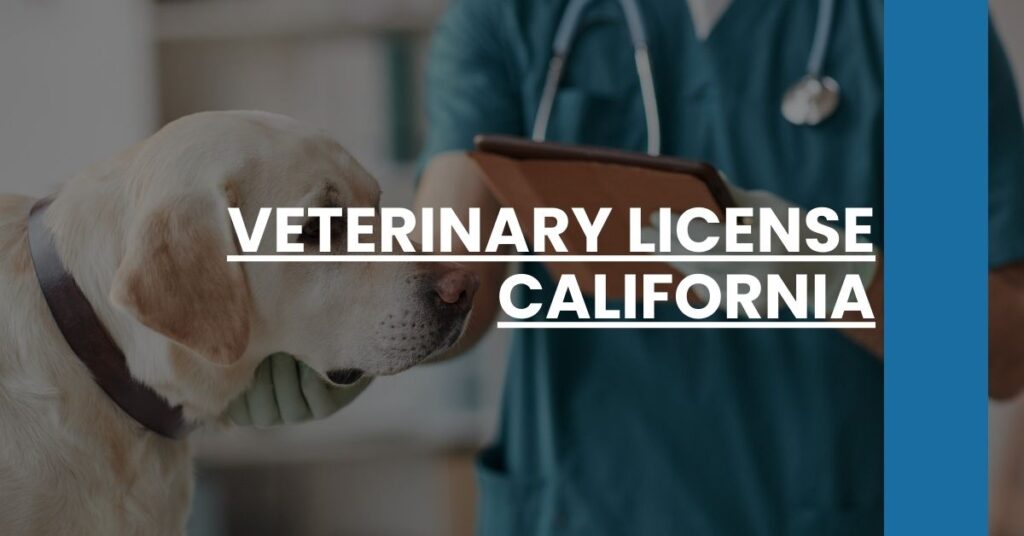Looking for schools in a specific city? Check out our lists of Veterinarian Schools in Los Angeles, San Diego, San Jose, San Francisco, Fresno, Sacramento, Long Beach, Oakland, Bakersfield, and Anaheim.
Obtaining a Veterinary License in California can seem like navigating a maze. I know how daunting it can be with all the requirements and procedures involved. From the essential educational criteria to passing critical examinations, there’s a lot to cover. We’ve put together a comprehensive guide to help you:
- Understand California’s Veterinary License requirements
- Explore the required educational paths and accredited schools
- Navigate the application process and required documentation
- Understanding California’s Veterinary Licensing Requirements
- Educational Paths to Become a Veterinarian in California
- Required Examinations for a Veterinary License in California
- Application Process and Necessary Documentation
- Licensing Fees and Renewals
- Continuing Education Requirements
- Frequently Asked Questions About Veterinary Licensing in California
- Tips for New Graduates and Out-of-State Veterinarians
- Looking for Veterinarian Information On States Bordering California?
- Conclusion
Understanding California’s Veterinary Licensing Requirements
Educational Requirements
To obtain a Veterinary License in California, you need to meet specific educational standards. This journey begins with earning a Doctor of Veterinary Medicine (DVM) degree from an accredited veterinary college. You cannot overlook this crucial step as it forms the backbone of your veterinary career. The American Veterinary Medical Association (AVMA) accredits veterinary schools, and you should ensure your chosen institution meets these criteria.
Examination Requirements
The next step in your journey involves passing standardized exams that assess your veterinary knowledge and skills. The primary exam you need to pass is the North American Veterinary Licensing Examination (NAVLE). It’s vital to prepare thoroughly for this exam as it evaluates your readiness to practice veterinary medicine.
Besides the NAVLE, California mandates two additional exams:
- California State Board (CSB) Examination: This test primarily focuses on state-specific veterinary practices, regulations, and ethical considerations.
- Veterinary Law Examination (VLE): This exam ensures you understand the legal aspects of practicing veterinary medicine in California.
Veterinary Assistant Controlled Substance Permit (VACSP)
If you’re planning on handling controlled substances (which most veterinarians do), you need to secure a Veterinary Assistant Controlled Substance Permit (VACSP). This permit allows you to legally manage and administer medications that are classified under controlled substances, ensuring compliance with state laws.
Ethical Standards and Disclosure
California holds high ethical standards for all veterinary practitioners. When you apply for a veterinary license, you must disclose any past convictions or disciplinary actions. This transparency helps maintain the trust and integrity essential in veterinary practice.
Educational Paths to Become a Veterinarian in California
Undergraduate Degree
Your path to becoming a veterinarian starts with an undergraduate degree. Although there’s no specific major required, fields related to animal sciences, biology, or physiology can give you a strong foundation. Focusing on courses like anatomy, biology, and chemistry during your undergraduate studies is beneficial.
Prerequisite Courses
Before you can enter a DVM program, you must complete certain prerequisite courses. These courses are foundational and cover topics like zoology, microbiology, organic chemistry, and biochemistry. They ensure you have the background needed for advanced veterinary education.
Choosing an Accredited Veterinary School
Selecting an accredited veterinary school is critical. In California, you have reputable options like UC Davis and Western University, both accredited by the AVMA. These institutions offer top-tier programs that prepare you comprehensively for a veterinary career. To explore more about veterinary schools and the best options available, you can visit:
Required Examinations for a Veterinary License in California
North American Veterinary Licensing Examination (NAVLE)
The NAVLE is a mandatory exam for veterinary licensure across North America. It’s designed to evaluate your ability to apply veterinary knowledge in practice. You can find detailed application processes and resources on the American Association of Veterinary State Boards (AAVSB) website.
Preparation Tips:
- Create a study schedule that covers all essential topics.
- Utilize available NAVLE study guides and practice tests.
- Consider enrolling in preparatory courses for comprehensive preparation.
For additional resources and practice, you can check out NAVLE practice test.
California-Specific Examinations
Beyond the NAVLE, you must pass the California State Board (CSB) Examination and the Veterinary Law Examination (VLE). These exams focus on state-specific regulations and legal aspects. It’s advisable to familiarize yourself with California’s Veterinary Medicine Practice Act and other relevant legal documents.
Study Tips:
- Review California’s veterinary laws and regulations.
- Discuss with peers or mentors who have recently taken these exams.
- Use state-provided study materials and resources.
Application Process and Necessary Documentation
Online Application
California simplifies the application process through the BreEZe system. This online platform makes your application process smoother and much faster. Ensure you complete all sections accurately to avoid any delays.
Required Documentation
You must gather several essential documents for your application. These include:
- Degree Certifications: Proof of your DVM degree from an accredited institution.
- Examination Scores: Official results of your NAVLE, CSB, and VLE exams.
- VACSP Documentation: If applicable, proof of your Veterinary Assistant Controlled Substance Permit.
- Ethical Disclosure: Statements or legal documents regarding any past convictions or disciplinary actions.
Licensing Fees
Understanding the costs associated with obtaining your veterinary license is crucial. In California, you should prepare for the following fees:
- Application Evaluation Fee: Approximately $350.
- Examination Fees: Varies based on the specific exams.
- Initial License Fee: Around $500.
Submission and Follow-Up
After compiling all necessary documents and ensuring you’ve accounted for all fees, submit your application via the BreEZe system. Always keep copies of all documents for your records. The processing time can vary, but typically, you should hear back within a couple of months. If there are any issues or missing information, the licensing board will contact you.
Maintaining an organized and meticulous approach throughout the application process can significantly streamline your journey towards becoming a licensed veterinarian in California.
Licensing Fees and Renewals
Initial Licensing Fees
When applying for your veterinary license in California, you’ll encounter several key fees. Knowing these fees in advance will help you avoid unexpected financial surprises. Here’s what you can expect:
- Application Evaluation Fee: This non-refundable fee is around $350. It covers the costs of processing your application and evaluating your qualifications.
- Examination Fees: These vary based on the specific exams you’re required to take. For instance, the NAVLE fee is approximately $720, and state-specific exam fees may vary.
- Initial License Fee: Once your application is approved, you need to pay a fee of about $500 for the issuance of your license.
Renewal Fees and Timelines
California requires veterinarians to renew their licenses biennially. Failing to renew your license on time can result in penalties and disrupt your ability to practice. Here’s what you need to know:
- Renewal Fee: The biennial renewal fee is $500. This fee is necessary to maintain your active license status in California.
- Renewal Period: You need to renew your license every two years. It’s important to mark your calendar and stay ahead of the renewal deadline.
Renewal Process
The renewal process is straightforward if you stay organized. Here’s how you can ensure a smooth renewal:
- Complete Continuing Education (CE) Requirements: Ensure you meet the 36 hours of CE every two years, with at least 1 hour focused on the use of medically important antimicrobial drugs every four years.
- Verify Your Information: Check and update your contact information with the California Veterinary Medical Board to receive renewal reminders and notices.
- Submit Renewal Application and Fee: Use the BreEZe online system to submit your renewal application and the $500 renewal fee before the deadline.
By staying proactive and organized, you can easily navigate the renewal process and maintain your practice without interruptions.
Continuing Education Requirements
Importance of Continuing Education
Continuing Education (CE) is crucial for veterinarians to stay updated with the latest advancements in veterinary medicine. It ensures that you provide the best possible care to your animal patients.
CE Requirements in California
In California, the Veterinary Medical Board mandates that licensed veterinarians complete specific CE requirements every two years. Here’s what you need to know:
- Total CE Hours: You must complete 36 hours of CE every two years. This helps you stay current with new technologies, treatments, and best practices in veterinary care.
- Antimicrobial Drugs Training: At least 1 of these 36 hours must focus on the use of medically important antimicrobial drugs, and this specific training is required every four years.
Approved CE Providers
Choosing the right CE courses and providers is crucial. California recognizes courses from several approved providers, such as:
- American Veterinary Medical Association (AVMA)
- California Veterinary Medical Association (CVMA)
These organizations offer high-quality courses that fulfill the state’s CE requirements.
Reporting and Documentation
Once you complete your CE courses, you need to document and report them properly:
- Documentation: Retain CE certificates and proof of completion for four years. This documentation may be required during audits.
- Reporting: Report your CE hours during your license renewal process using the BreEZe system.
By adhering to these requirements, you contribute to the excellence and professionalism of veterinary medicine in California.
Frequently Asked Questions About Veterinary Licensing in California
Common Concerns and Queries
Addressing common questions can help you navigate the licensing process more easily. Here are answers to some frequently asked questions:
License Display Requirements
- Q: Where should I display my veterinary license?
- A: You must display your veterinary license at your principal place of practice. This ensures transparency and assures clients of your credentials.
Out-of-State Licensing
- Q: Can I practice in California if I’m licensed in another state?
- A: Yes, but you need to apply for licensure by endorsement. This involves submitting a reciprocity form, meeting California’s requirements, and passing the state-specific exams.
Maintaining Medical Records
- Q: How long should I keep medical records?
- A: In California, you need to maintain medical records for at least three years after the last visit. This ensures compliance with state regulations and supports continuity of care.
These answers can help you better understand the practical aspects of maintaining a veterinary license in California.
Tips for New Graduates and Out-of-State Veterinarians
Practical Advice for New Graduates
As a new veterinary graduate, you might feel overwhelmed by the complexity of the licensing process. Here are some tips to help you get started:
- Join Professional Organizations: Joining organizations like the AVMA and CVMA can provide networking opportunities, resources, and support as you begin your career.
- Utilize Job Boards: Look for job openings on veterinary job boards and through local veterinary associations to find opportunities that align with your skills and interests.
Advice for Out-of-State Veterinarians
If you’re already a licensed veterinarian in another state and planning to move to California, follow these steps to ensure a smooth transition:
- Understand California’s Laws: Familiarize yourself with California’s veterinary laws and regulations. This will help you adapt to the state’s specific practices and standards.
- Apply for Reciprocity: Submit a reciprocity form and fulfill any additional requirements, such as the California State Board Examination and the Veterinary Law Examination. This will help you transition your practice seamlessly.
- Obtain Your VACSP: If you plan to handle controlled substances, don’t forget to apply for the Veterinary Assistant Controlled Substance Permit (VACSP).
You can find more detailed advice on making the career transition in Become a veterinarian.
Looking for Veterinarian Information On States Bordering California?
In addition to California, we suggest looking for schools in nearby states.
- Veterinary License Oregon
- Veterinary License Nevada
- Veterinary License Arizona
- Veterinary License Idaho
- Veterinary License Washington
Conclusion
By following these steps and understanding the requirements, you’ll be well on your way to obtaining and maintaining your Veterinary License in California. Remember, staying organized and proactive will ensure a smooth process and help you establish a successful veterinary career in the Golden State.

